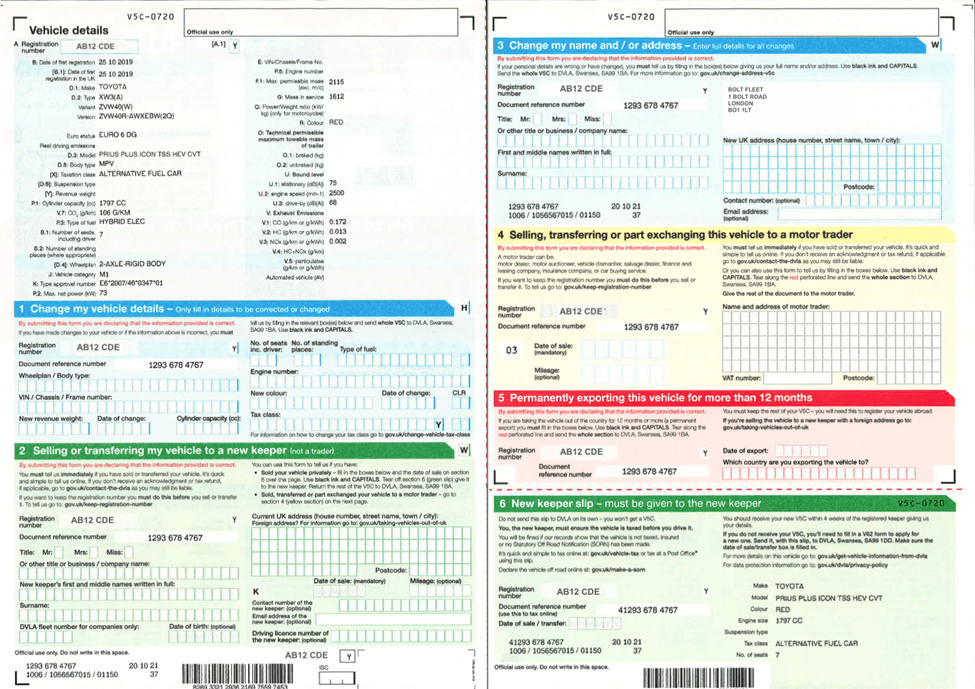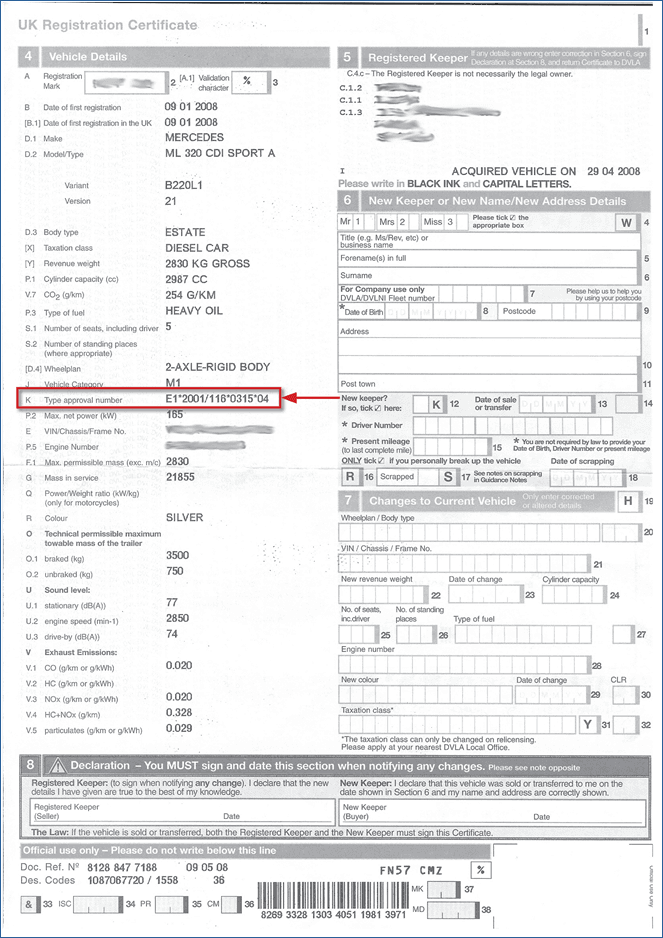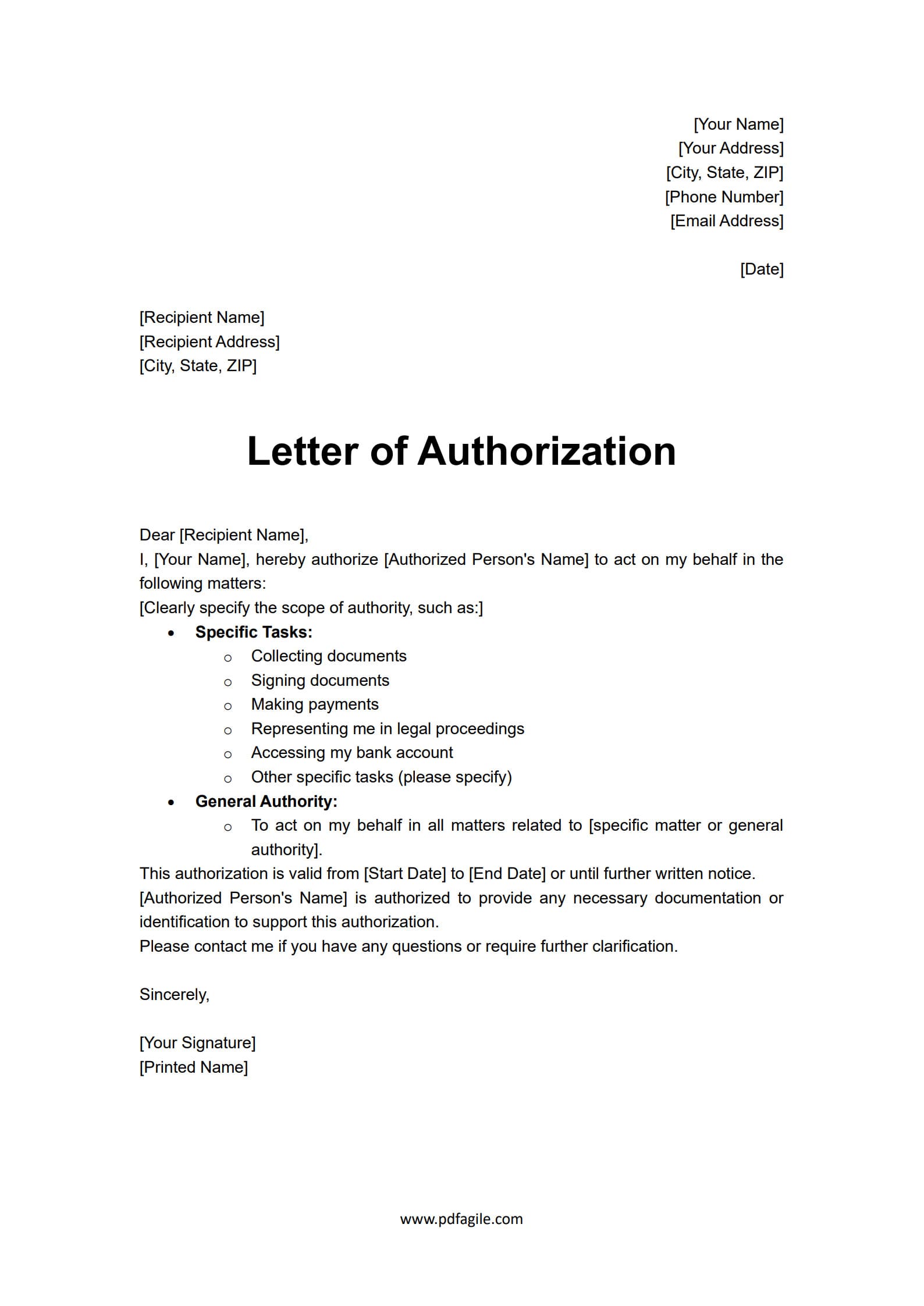Reasons for Transferring Vehicle Ownership
Regardless of how you acquire a vehicle, you are lawfully required to transfer it to your name immediately or as soon as possible. This is true even if it is a new or used vehicle, a gift purchased from a family member, or an inheritance. Should you get married or divorced, you will need to (or wish to) change your last name on the title. Concerning the transfer of ownership of a vehicle, the logbook is, therefore, an important document.
These all constitute reasons for changing vehicle ownership. If it is a new vehicle, the dealership from where you buy it will usually register the vehicle for you. If this is not the case, you will need to do the transfer of ownership of the car yourself. If it is a used vehicle, as mentioned in the examples above, you will need to do the DVLA change of ownership yourself.
The Process for Changing Vehicle Ownership
The process of changing vehicle ownership starts with purchasing the vehicle (or with any of the examples mentioned above). You need to own a legal driver’s license, issued by the Driver and Vehicle Licensing Agency (DVLA), to effect the change of ownership of a car.
The Logbook
The process includes obtaining a logbook. It is also called a V5C, or the Vehicle Registration Certificate, which is a DVLA requirement. The logbook contains the taxation and registration history of the vehicle. It is a vital document, especially if the purchase is a used vehicle. All the information about who is responsible for the registration and taxing of the vehicle is contained in the logbook.
This is, therefore, proof that you are the registered keeper of the vehicle. The information includes the following:
- the previous owner’s or owners’ name or names
- the type of vehicle.
- the model
- the year
- the date it was first registered
- the color
- the make
- the chassis or VIN number
- the size of the engine
- the weight of the vehicle
- the fuel type (diesel or petrol)
The logbook is where you would make changes, such as your name or should the details of the vehicle change. An important note here is that the logbook is not proof of ownership. However, it is a necessity to change vehicle ownership. So you need to be very careful about it. Just pay close attention to it and get everything done appropriately.
Once the seller hands the information to the new owner, they need to inform the DVLA of the new keeper. The old V5C will no longer exist, and the new keeper will be given new documents to complete.
The seller can provide the details of the V5C manually, or they can do it online through the DVLA. However, even if it is completed online, the new keeper still needs the new logbook to get the reference number. This is part of the process. See below for an example of a logbook. This is the content that would be necessary, whether it is for a new logbook or an existing one that needs changes.

Transfer of Car Ownership
As mentioned above, the first step is to complete the V5C, which should be sent to the new keeper of the vehicle. Car taxes are not transferable. It is, therefore, an important aspect to remember that the new keeper has to pay road tax as soon as they own the new logbook. The tax is especially vital if it is a used vehicle. The new owner cannot take the car on the road if he or she has not paid the road taxes.
Once the seller notifies the DVLA of the sale, they will reimburse the seller for any taxes that are left on the car. It, therefore, becomes the new keeper’s responsibility.
The easiest way to transfer ownership is by doing it online at the DVLA portal on their website. This is easy as you can fill in all the details using the online form. You would need a reference number, which can be obtained from the V5C. That is the reason why the logbook is essential.
If it is not possible to use the DVLA online portal, the new keeper can also do the DVLA change of ownership by post. The process of changing vehicle ownership is the same for all vehicle sales. It does not matter whether it is a gift purchased from a family member or an inheritance. It is legally required to register all types of vehicles, which includes the payment of road taxes.
It is also required by law that all vehicles be insured, especially used vehicles. As with the road tax, the new owner cannot use the vehicle if it does not have insurance.
Below is an example of what a DVLA vehicle registration looks like. Completing the form is an easy task. It is just a matter of completing the multi-choice questions on the form, such as:
- Confirming who the buyer and seller are
- Confirmation of the details of the vehicle
- Whether the vehicle and registration details are correct.
- This is followed by the full name, address, and postal code of the new owner.
- The date of the sale
The form has a section where the new owner needs to declare that all details entered on the form are correct. Once the buyer submits the form, the vehicle is registered with the Driver and Vehicle Licensing Agency (DVLA).
You can provide the email addresses of both buyer and seller if you wish to receive a record of the registration.



